-

Khoelife
-
Google Map of Indigenous Place Names
The map of indigenous place names located in the San tsî Khoen Digital Archive is duplicated on Google Maps in order to make the information more accessible.
-
San & Khoi Centre YouTube Channel
Critical video material generated by the San & Khoi Centre is duplicated on our YouTube Channel to provide alternative access to these resources.
-
Endangered Languages Digital Archive on archive.org
The Endangered Languages Digital Archive is maintained by the San and Khoi Unit at the University of Cape Town. The research unit is the result of a partnership between UCT, traditional San and Khoe leadership structures and non-governmental and civic organisations. The archive aims to be a central resource for all extant material related to San and Khoe languages (Khoe-Kwadi, Kx'a and Tuu language families). The open access publications found in the San tsî Khoen Digital Library is duplicated on archive.org to provide alternative access to these resources.
-
Multilingual Dictionary: DSAC and African Tongue
This is a dictionary portal for the N|uu language with accompanying translations in Nama, Afrikaans and English. You can search for any of the included target words in N|uu, Nama, Afrikaans, or English. To assist with learning the pronunciation of the language, N|uu words are also transcribed into the International Phonetic Alphabet (IPA). Additionally, audio recordings from mother tongue speakers are provided as clear examples of how the language sounds. Sadilar hosts a digital version of the dictionary; see below link. Saasi Epsi is an app based on this digital dictionary; see below link.
-
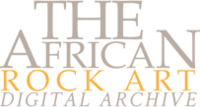
The African Rock Art Digital Archive
The Rock Art Research Institute (RARI) has a substantial collection of historical documents, photographs, redrawings and slides in addition to its large working collection of slides, tracings and redrawings. Over time, many of the older slides started to change colour and deteriorate in quality, prompting a programme to preserve the historical documents, photographs and slides in RARI's possession and reduce their handling by researchers and visitors. Preservation was possible by digitising the collections and making them available on a database, thereby reducing physical handling while facilitating access to images and documents. The Ringing Rocks Foundation provided the necessary funding for this project and in January 2002 the Digital Laboratory was named in their honour. The laboratory had the daunting task of digitising all the existing archives at RARI as well as providing a database from which the archives could be accessed and viewed. Moreover, with the specification for the database being agreed upon, RARI hired a London-based company called System Simulation Ltd (SSL) to develop the much-needed software for the database. The Ringing Rocks Digital Laboratory started its digitisation process in August of 2002. During the course of digitisation, RARI realised that it could use the expertise and equipment it has access to through the Ringing Rocks project to record other important collections, both private and institutional. This vision culminated in the South African Rock Art Digital Archive (SARADA), a resource that includes collections owned by the Analysis of Rock Art of Lesotho (ARAL) project, Iziko Museums of Cape Town, Natal Museum, National Museum (Bloemfontein), University of Cape Town (UCT), the University of South Africa (UNISA), RARI and Janette Deacon (private collection). The scope of this project was funded by the Andrew W Mellon Foundation. With the end of the Ringing Rocks project in February of 2005, preparations were under way to start digitising the collections as part of the SARADA project. By August 2005, ARAL was being digitised. The goal of the Ringing Rocks Digital Laboratory and The African Rock Art Digital Archive (SARADA) is to digitise rock art collections on the African continent, make them available in an easily searchable database, in so doing conveying the importance of protecting and preserving the continent's rich archaeological heritage and facilitating ongoing research and interest in its fascinating past. Collections include slides, historical documents, tracings, redrawings, renderings, prints, sketches and photographs.
-

ǂKhomani San - Hugh Brody Archive
The ǂKhomani San are the first people of the southern Kalahari. They lived as hunters and gatherers in the immense desert in the northwest corner of South Africa. For them, it was a land rich in wildlife, plants, trees, great sand dunes and dry riverbeds. When the ǂKhomani San share their history, they tell a story of dispossession from their lands, erasure of their way of life, and disappearance of their language. To speak of their past is to search in memory for all that was taken from them in the colonial, apartheid and post-apartheid era. But they also tell a story of reclamation and recovery of lands, language and even of memory itself. They tell a story of struggle to emerge from the losses of the past, to put in place a new story. The collection presented here includes: photographs, posters and maps, trailers from the 'Tracks across Sand' documentary, and interview transcripts.
-
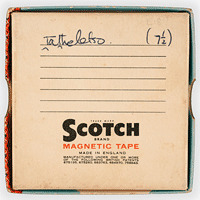
Ernst Westphal: San Languages
Westphal was Professor of African Languages at UCT between 1962 and 1984, and is best known for his contributions to the studies of non-Bantu click languages, lumped together under a misleading cover term ‘Khoisan’ by other scholars. The Westphal sound files are precious because they include recordings of some languages, which are no longer spoken and of which there is no written record. The collection presented here includes sound files and manuscripts.
-
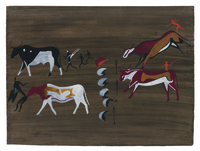
George Stow Digital Archive
The George Stow Digital Archive includes the copies of rock paintings made by polymath George Stow in the mid 19th century, as well as a selection of his field notebooks, letters and maps. George Stow was an Englishman who relocated to the turbulent Eastern Cape in the early 1840s. He became interested in many aspects of South African history and landscape, undertaking extensive geological surveys, taking up various posts, publishing poetry, and researching and writing an extensive history of the ‘Native Races’ of southern Africa. He made several hundred copies of rock paintings, trekking thousands of miles across the countryside and interviewing San wherever he could on the meanings and use of the art. Today his copies are amongst the loveliest records of paintings, revealing as much about the rock art itself as about Stow and the ideas he had about them. George Stow’s archive, housed mainly at the National Library of South Africa, Iziko South African Museum, the McGregor Museum and the University of Cape Town, includes astonishing collections of detailed maps, field notebooks, letters, drawings, manuscripts and painted copies of rock paintings and engravings. The digital archive includes selections of the maps, notes and letters, and all the extant rock art copies.
-
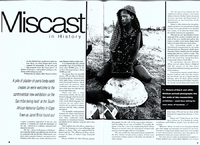
Miscast Archive
The Miscast archive, both digital and document, includes the documentary material collected as well as made for the exhibition Miscast: negotiating the presence of the Bushmen, held at the South African National Gallery in 1996 and curated by Pippa Skotnes. The Miscast exhibition opened to much publicity and generated vigorous debate during its five month showing. Part of the event was the first major debate amongst representatives of San and other groups from South Africa, Namibia, Angola and Botswana, organised by the curator. While the archive includes the physical residue of the exhibition, it also, more importantly, contains the photographs and documents collected as part of the research leading up to it, as well as the comments of visitors to the exhibition and many of the publications it generated. Currently, the archive includes a large collection of photographs assembled in two categories. One is the documentation of San objects and artefacts from collections in museums both in South Africa and London. These include skin bags, jewellery, tools and other artefacts such as divining disks, engraved walking sticks and decorated eggs. While this is not a comprehensive photographic database, it can give researchers a good idea of what is held, in South African museums in particular. The second is a collection of photographs (copies) of San subjects taken between 1858 and 1952 held in South African museums and museums in London (Pitt Rivers and British Museum) and Windhoek (the State Archives). Again, this is not a comprehensive collection, but is representative of collections held in these institutions. A selection of these have been digitised. There is also a collection of newspaper articles and archival documents on the subject of the San, collected mainly from the first three decades of the 20th century. The collection presented here is not the complete Miscast Archival contents. Rather, it documents elements of the exhibition mentioned above. This icludes: (i) the event reviews; (ii) the exhibition labels; and (iii) pictures related to the exhibition.
-
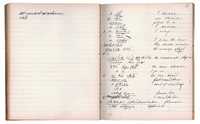
The Digital Bleek and Lloyd
This digital publication is part of a Llarec project to digitise, research and publish the Bleek and Lloyd Archive. The Digital Bleek and Lloyd includes scans of every page of the 110 Lucy Lloyd
-
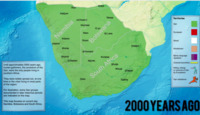
!Khwa ttu San Heritage Centre Featured Exhibitions: Enter the world of the San, southern Africa's First People
!Khwa ttu San Heritage Centre provides a platform for San to share and explore San history and culture among both San community members and local and international visitors. On their 'Featured Exhibitions' page the information on the following topics can be found: Genetics and Human Origins - !Khwa ttu has worked in co-operation with geneticists who are exploring how the San fit into accounts of the origins of all people from Africa. Eight videos are featured presenting the work of Brenna Henn, Carina Schlebusch and Himla Soodyall. The individual video topics include: (1) Why is our San history so important? (2) We are all from Africa. Do we come from southern Africa? (3) Are San descendents of the earliest people in southern Africa? (4) Are San first people? (5) Did your ancestors leave Africa 60,000 years ago? Or did they stay? (6) Who are the KhoeSan? How are the Khoe and the San different? (7) What is the relationship of Coloured people to KhoeSan people? (8) Do South Africans have KhoeSan ancestry? The Emergence of Human Creativity - Archaeologists describe four sites that provide us with information on the ancestral legacy and history of humanity in southern Africa. The archaeological sites include: Diepkloof Shelter, Pinnacle Point, Klassies River and Border Cave. Loss of San Land and Lifestyle - An animated video representating the land loss of indigenous people starting from 2000 years ago to 1965. The video was undertaken by Josh Cohen under the commission of !Khwa ttu San Heritage Centre. The San Healing Dance - The site offers a video entitled 'The last tribal dance' where people have the opportunity to witness a San healing dance by
-

Khoelife
-
Google Map of Indigenous Place Names
-
San & Khoi Centre YouTube Channel
-
Endangered Languages Digital Archive on archive.org
-
Multilingual Dictionary: DSAC and African Tongue
-

The African Rock Art Digital Archive
-

ǂKhomani San - Hugh Brody Archive
-

Ernst Westphal: San Languages
-

George Stow Digital Archive
-

Miscast Archive
-

The Digital Bleek and Lloyd
-

!Khwa ttu San Heritage Centre Featured Exhibitions: Enter the world of the San, southern Africa's First People



